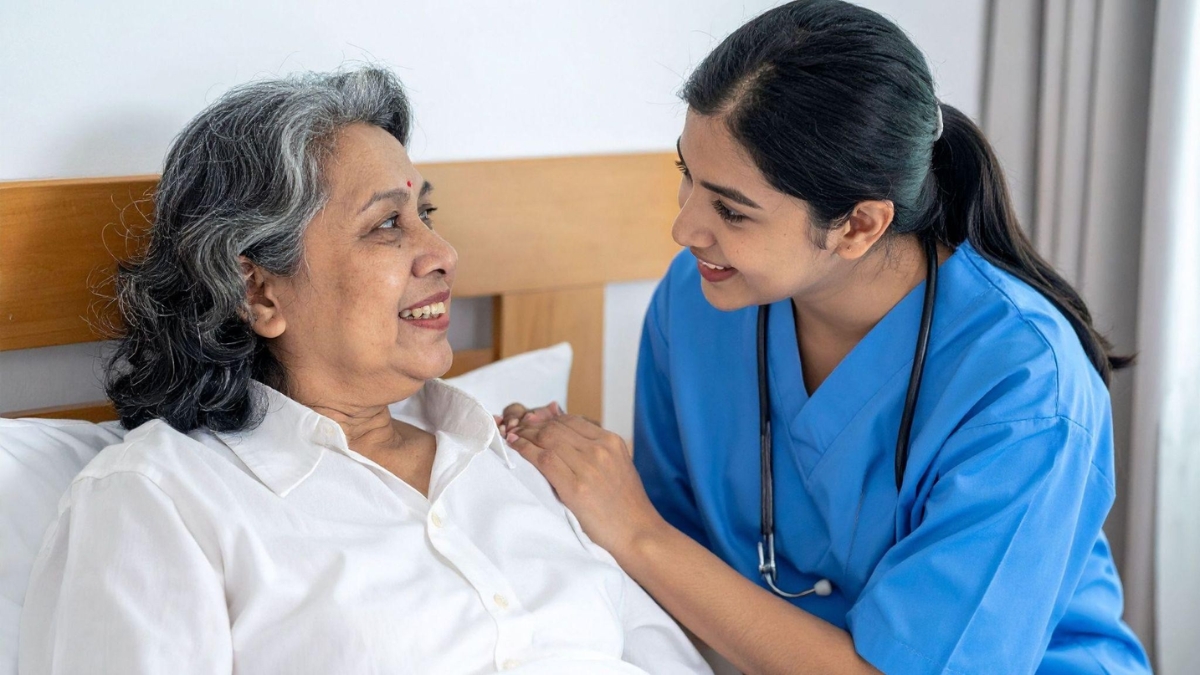
Prayagraj (Uttar Pradesh)[India], May 10: India’s health care system is close to a collapse due to the devastating effects of the COVID-19 pandemic. With more than 20 million infected citizens and more than 226 thousand deaths, India is going through an unimaginable crisis. Pictures of distraught families counting their dead and sick people being turned away from hospitals amidst the most significant health crisis in history worry the whole planet.
Relaxation of measures definitely did not help this horrific scenario. Despite warnings of Covid-19 risks, the people of India still enjoyed elaborate wedding parties, sports matches, and festivals. India’s health system was unprepared for the new wave that hit the country so devastatingly. The lack of health care, personnel, beds, and oxygen brought terrible consequences. On top of all that, geographical barriers pose a tremendous challenge for the health system too.
Many people in India do not have access to primary healthcare.
A significant portion of India’s population is not getting the most primary health care. The country has a doctor-to-patient ratio of 1:10.189, which is approximately lower than the 1:1,000 recommended by the WHO. The situation in the rural parts of India is devastating – the people need three times as many nurses and five times as many paramedics it has today. The coronavirus has proven the urgent need for a paradigm shift in the provision of primary care. Instead of patients coming to doctors, it should be the other way around. Medical practitioners had to find a way to reach out to society’s most vulnerable and distant parts.
Access to quality primary care has always been a massive problem in the Indian healthcare system. The country has a devastating shortage of around 600,000 doctors, and over two million nurses reported the Centre for Disease Dynamics, Economics & Policy (CDDEP). There is also a worrying shortage of radiologists; there are over 150.000 of the positions unfilled.
However, slowly but surely, things are changing for the better.
Telemedicine is a game-changer
Thanks to telemedicine which enables treating patients remotely, there is a new horizon in the public health domain of India. Telehealth plays a critical role in India’s health system and is now needed more than ever. It is a technologically and digitally advanced method of health care that has provided immense help to those required during these challenging times. Patients can now connect with doctors and seek advice no matter the distance, merely using smartphones or computers. It’s a much-needed boost to the system that has suffered from the adverse effects of poverty and geographical barriers.
Sprint Medical offers services in Prayagraj, Uttar Pradesh, and specializes in telemedicine and cares for all of the patient’s health needs. Thanks to the high-end digital solutions, Sprint Medical provides affordable care – anytime, anyplace. Sprint Medical allows the patients to choose the best doctors from all over India and book appointments online. They offer assisted doctor consultations where a nurse will help patients in the process and uses advanced IoT-connected devices that allow doctors to have correct diagnostics virtually.
The rise of virtual healthcare
Using integrated end-to-end solutions, doctors can be virtually present to care and follow-up on their remote patients. Sprint Medical collects patient’s real-time vitals, EKG, Blood Glucose Monitoring, risk factors, red flags, and anything else that needs to be checked and monitored.
Telemedicine has throughout 2020 shown that it’s an excellent medium to provide healthcare to those who lack the chance to get help in person. The method is as efficient as it is cost-effective. Doctors are now able to manage patients and filter out those who need to be hospitalized. For others, doctors use telemedicine to check their symptoms, advise about required tests, medication and do follow-ups.
Thanks to advanced technology, patients can now be monitored at home, with doctors tracking their progress and intervening if needed. Healthcare is shifting from hospital to home, giving patients the ultimate access to care 24/7 via mobile phones.
Getting people to use these new digital platforms had its struggling moments, but today, both doctors and patients adopted telemedicine as one of the primary healthcare delivery channels. With all of the OPDs closed due to lockdown, most were still able to maintain the consultation charges identical to the OPDs on these platforms.
This unprecedented rise in teleconsultations, telepathology, teleradiology, and e-pharmacies is expected to push India’s telemedicine market to reach $5.5 billion by 2025. New telemedicine platforms are popping in India, with start-ups such as Phable, Practo, mFine, CallHealth, and Lybrate.
Every patient deserves to get at least primary care. The future has come, and it has connected the patient and the doctors. All the information is tracked on Electronic Medical Record platforms vital in creating these care ecosystems in India. Remote healthcare, telemedicine, and teleconsultation meet the unmatched needs of the healthcare resources required.
Telehealth is the future of medicine.
The pandemic has proven that all of the parties involved need to invest in developing the tool that is undoubtedly the future of home healthcare. Because of its convenience and cost-effectiveness, remote monitoring and telemedicine services boost the system significantly.
Telemedicine provides invaluable benefits. There are now devices that can monitor patient’s stats such as pulse, saturation pulse, and ECG in real-time. This data can also be stored and analyzed, enhancing the safety and security outcome of patients at home. Providing a real-time solution depending on real-time information available on the platforms is maybe one of the most significant benefits of this new technology.
For all these reasons, telemedicine poses a significant improvement in primary healthcare. No less significantly, Telehealth will help the future evolution of science immensely. A large pool of data available for future research and analysis will lead to evolutionary guidelines and breakthroughs.
Although Virtual Doctor consultation is still somewhat of a novelty in India, citizens have quickly adopted this new pillar of healthcare. This shows that while Covid-19 has impacted India in the most detrimental ways, the country now has an excellent opportunity to become a digital health leader.



